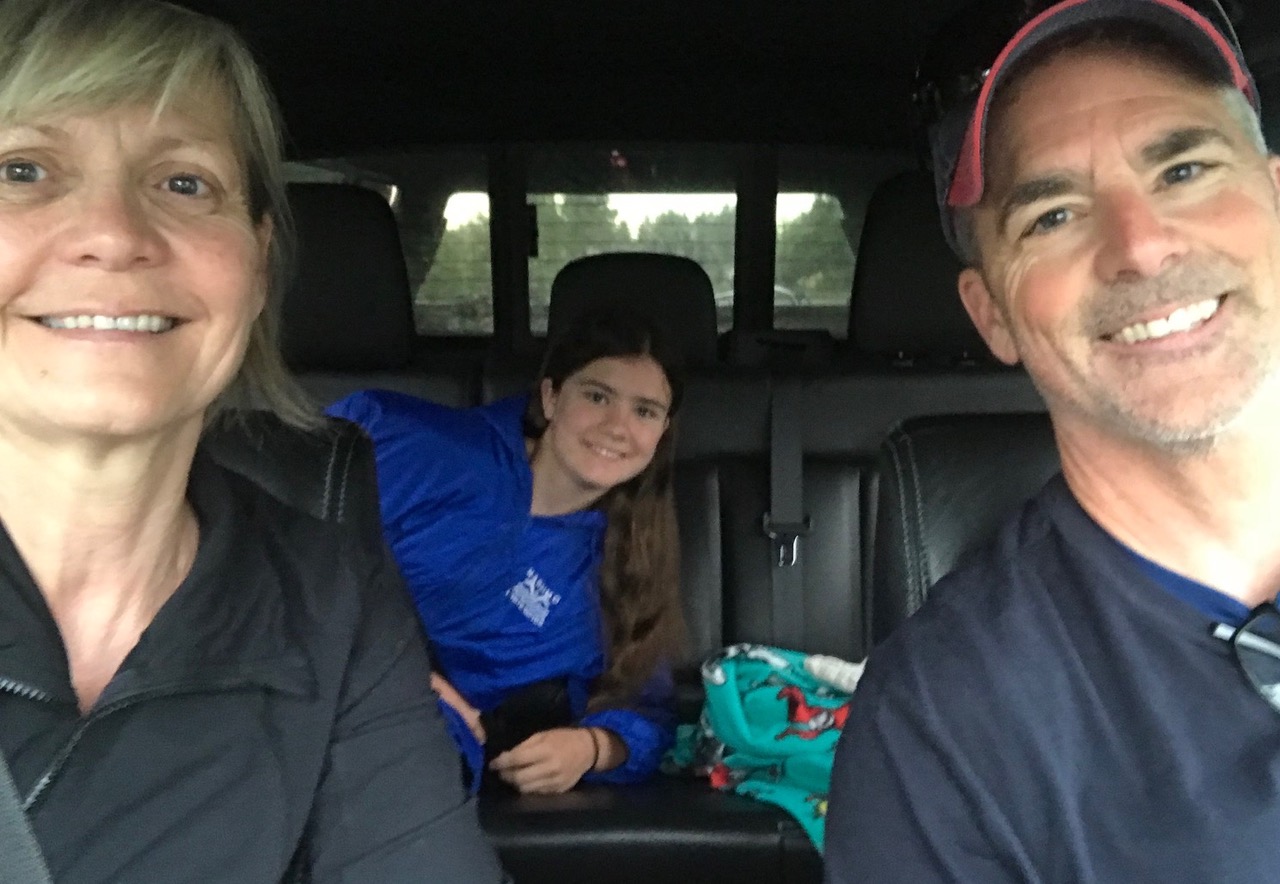
03 Dec Who Can I Be That My Employees’ Eyes Shine?
It had been 16 years since my last triathlon, and 4 years since I had even raced a 5 km run, but when my husband suggested that our family enter a sprint-triathlon and my 13-year old daughter was excited to compete in her first one, I said yes. Surely there would be lots of time to train between speaking engagements, family commitments and launching my first book, I thought. There wasn’t. But I decided that I could “show up” for her, even though it meant getting out of bed at 5:00 a.m. that day, and knowing I was not well trained. This is the same reason I did the parent relay at her swim club the year before, even though I hadn’t dived off a block for 40 years and had maybe only done it once back then. I want to show up for my kids while I can. It’s a choice.
As leaders in the workplace, we can make a similar choice to show up for our employees every single day. Rosamund Zander, one of the keynotes at the Health Work & Wellness Conference that I led years ago asked the question, “What am I doing that my employees’ eyes are not shining?” I think you can also ask that question in the positive frame – “What am I doing that my employees’ eyes are shining? How can I show up for them? What am I choosing to practice, and what am I modelling?”
Practices that replenish our energy and create a culture of continual renewal at work are not the norm in our society. The easier choice is to go with the flow, which often means overextending and exhausting ourselves, and allowing our team members to do the same, not paying attention to how that actually reduces our ability to be as effective, productive and creative, over time.
Choosing to show up for your employees is a positively deviant choice. This means it is intentional behavior carried out for positive reasons.
Someone once gave a good example of how leaders can show up for their employees with this statement: “Good leaders need to ‘block and tackle’ so that their employees can move forward with things.” In other words, we need to support them, stand up for them, encourage them and ask the right questions so they come up with their own answers.
Dr. Robert Quinn provides another example in this story from his book The Deep Change Field Guide: A Personal Course to Discovering the Leader Within. The story is of a CEO who, after getting caught in the trap of solving people’s problems and thereby creating a culture where all he did was crisis management, started asking the question, “What is the result you want to create?” Once he did this, and asked people to come back to him when they knew the answer to that question, his culture changed dramatically. When people contemplated the result they wanted to create, they also knew how they were going to get there, so they no longer needed him to solve their problems. His “showing up” in this way allowed their creativity and efficacy to shine.
Showing up might also mean replacing destructive behaviours with resilient ones, like learning not to email your employees on weekends, but instead set guidelines around email behavior in your team or workplace. It might mean learning to mindfully listen to others’ points of view and being more mindful of your actions and words, and how they impact the people who work for you. Or setting an example by taking your lunch away from your desk. It might mean being more conscious of living the values of your organization (or developing a set of values if you don’t have them.)
A simple, yet effective, practice that I recommend to leaders is reflective writing. This simply means to set aside 5-10 minutes of reflective time in your morning to write, by hand, in a journal about a challenge you have at work and to explore new, creative solutions. There is something about the act of writing that unlocks a different part of our brain than that we use to simply think or talk about an issue. Try some reflective writing on this question: Who can I be today that my employees’ eyes shine?
The solutions you come up with will be as unique as you and your work culture are, but there are always ways that we, as leaders, can shift our own behavior to impact the culture for our people.
In what ways can you choose to show up for you employees today, and by doing so, support them to flourish and exceed expectations? Who can you be, that your employees’ eyes shine?
Follow this blog for bi-weekly ideas to create your “better place to work” from Deborah’s new book A Better Place To Work: Daily Practices That Transform Culture.
A perfect gift for someone on your Christmas list who leads a team or organization, or for your next book club. Reduced prices are available for bulk orders.
If you want to delve deeper into these practices join Deborah’s online course 8 Weeks To A Better Place To Work. Log in every week from the comfort of your office or home and join others, like you, who are engaging in new practices to improve the health and positivity in their workplaces. A complimentary copy of A Better Place To Work will be sent to you as a part of this course. It’s like book club, with online coaching – fun, informative and hugely practical!

